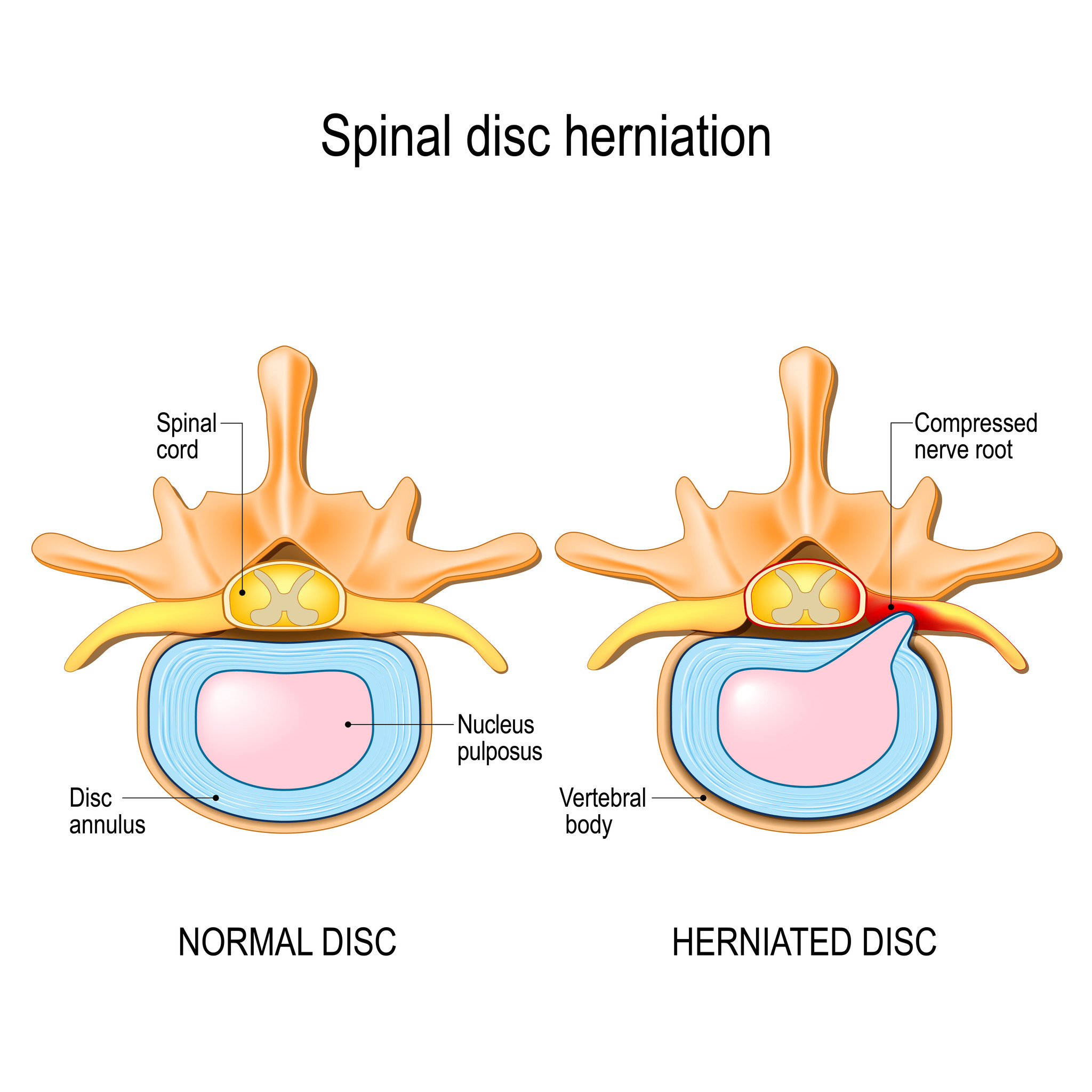Your cart is currently empty!
Tag: feldenkrais
-
Finding Strength Through Softness
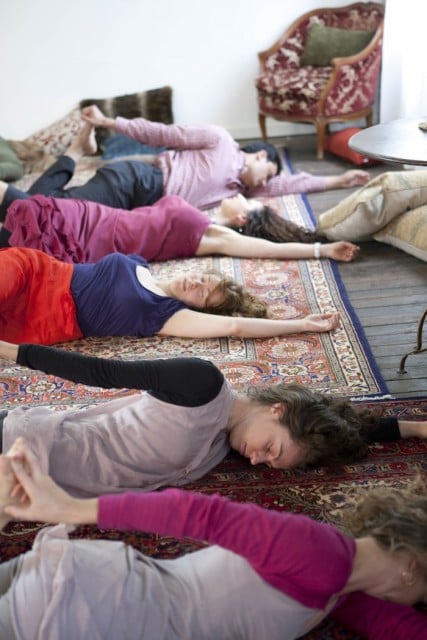
Finding Strength Through Softness
DATE: Thursday 28th July 2015, 7.00pm – 9.00pm
PRESENTER: Jodie Krantz, Physiotherapist, Feldenkrais Practitioner and President of the Australian Feldenkrais Guild (WA Division) Read More
VENUE: Mt Hawthorn Community Centre – Lesser Hall – 197 Scarborough Beach Rd Mt Hawthorn
PARKING: The Lesser Hall is downstairs. There is plenty of free parking available outside.
COST: $35 payable to Heidi Sumner
BOOKINGS AND ENQUIRIES: Please email Heidi Sumner at sumnerheidi@hotmail.com or phone her on 0419 140 389
BRING: 2 large towels and an exercise mat or large blanket
WEAR: Comfortable clothing you can move in, warm socks, dress in layerA Feldenkrais Workshop for Manual Therapists
The Feldenkrais Method, as described in Norman Doidge’s new book “The Brain’s Way of Healing” utilises the brain’s neuroplasticity to help regain more graceful, comfortable and efficient movement. It enhances sensory awareness and results in almost effortless improvement in posture and movement habits, reducing pain and tension.
Physiotherapist and President of the Australian Feldenkrais Guild (WA) Jodie Krantz leads you through an experiential Feldenkrais journey into a new level of bodily awareness, specifically designed to help aromatherapists and massage therapists take better care of their own bodies.
Learn new ways to manage your own pain, tension or posture issues. Discover how to use you body in a more efficient and graceful way. Become aware of habitual patterns that interfere with optimal self-use
Come along and find out how this amazing method works. Discover for yourself how you can reduce strain and effort in your work.
Please dress in layers and wear warm comfortable clothing including socks. Bring 2 large towels and if you have one, an exercise mat or a thick blanket you can lie on.
Agenda for the Evening
7.00pm: Introduction to Feldenkrais and why it’s useful for massage therapists and aromatherapists
7.15pm Awareness Through Movement (ATM) Lesson: The Power of the Pelvis
7.50pm Tea Break / Questions and Sharing from the ATM Lesson
8.00pm ATM Lesson: Easy Arms and Hands
8.35pm Questions and Answers from the ATM Lesson
8.40pm Feedback Questionnaire
8.45pm CompletionJodie will be available until 9.00pm to answer any remaining questions.
Come along and give your body some well deserved attention!
View Jodie’s Feldenkrais Videos on YouTube
-

Change Your Brain to Relieve Pain: An Introduction to Feldenkrais

Change Your Brain to Relieve Pain: An Introduction to Feldenkrais
Have you or someone you care about been experiencing chronic pain, with persistent or recurring episodes of pain or tension? Have you tried treatments which only work for a short time or don’t work at all? Then this enlightening evening about the Feldenkrais Method will open your mind to a new possibility – the possibility that your problem does not lie within the body part where you feel it, but in the brain and nervous system.
The great news is that you can change your brain and relieve almost any kind of pain with an ingenious method developed decades ago by a scientist ahead of his time, Dr Moshe Feldenkrais. Put simply, the Feldenkrais Method is a way of changing your habits to make movement easier, more comfortable and more enjoyable (while making your brain more flexible).
Current pain science tells us that if you’ve had pain for more than 3 months (chronic pain), the main problem is usually no longer in the tissues, muscles or bones, it’s actually in your brain and nervous system, which is where all pain is sensed. The movements in Feldenkrais are designed to send new and different messages to your brain, changing the way your brain and nervous system function. Feldenkrais works with your whole body and your mind, not just the parts that hurt. Read more about Feldenkrais.
Presenter Jodie Krantz is the President of the Australian Feldenkrais Guild (WA Division) and has been a registered Physiotherapist for over 25 years. Read more about Jodie’s experience and values.
Jodie has helped many people with seemly intractable chronic pain turn their lives around, using Feldenkrais:
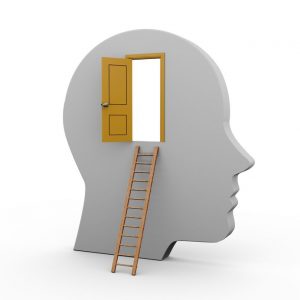
Feldenkrais: Changing your Brain “It is by far the most effective and powerful method I use. One client, who had not experienced a single minute without pain for over 20 years did Feldenkrais with me for 3 months before he experienced his first 2 hours of being pain free. The pain-free periods gradually got longer and more frequent. After one year he is pain-free most of the time. When he experiences pain now he knows how to find his way out of it again using the Feldenkrais Method.
“Another client with Rheumatoid Arthritis went from severe difficulty walking to being almost pain-free in a couple of months. Many people find Feldenkrais is a great bridge that enables them to move on to more vigorous forms of exercise such as walking or Pilates.”
So what are some of the things that make Feldenkrais stand out over other methods?
- Changes can begin to occur from the very first time you do Feldenkrais
- Improvement is usually gradual and cumulative – the slow, gentle pace is what makes it safe and helps avoid flare-ups
- Autonomy – you can learn to do Feldenkrais for yourself, reducing the need for hands-on treatment and maybe lessening the need for medication
- Prevention – you become more sensitively tuned into your body so that you realise more quickly when you are doing something that will end in pain later on
- Each person is unique and different, so the exercises have built in flexibility and adaptability to your particular situation and needs
To understand what Feldenkrais is you need to actually experience it. So come along to the Bodhi Tree and experience Feldenkrais first hand.
This is how the evening will go:
- Brief description of the Feldenkrais Method
- How it works to change your brain and your pain
- Experience a Feldenkrais “Awareness through Movement” lesson sitting in chairs
- Questions and Answers
- Informal chat with Jodie after the workshop
-

Introduction to the Feldenkrais Method: ‘New Light on Old Patterns’
Introduction to the Feldenkrais Method: ‘New Light on Old Patterns’
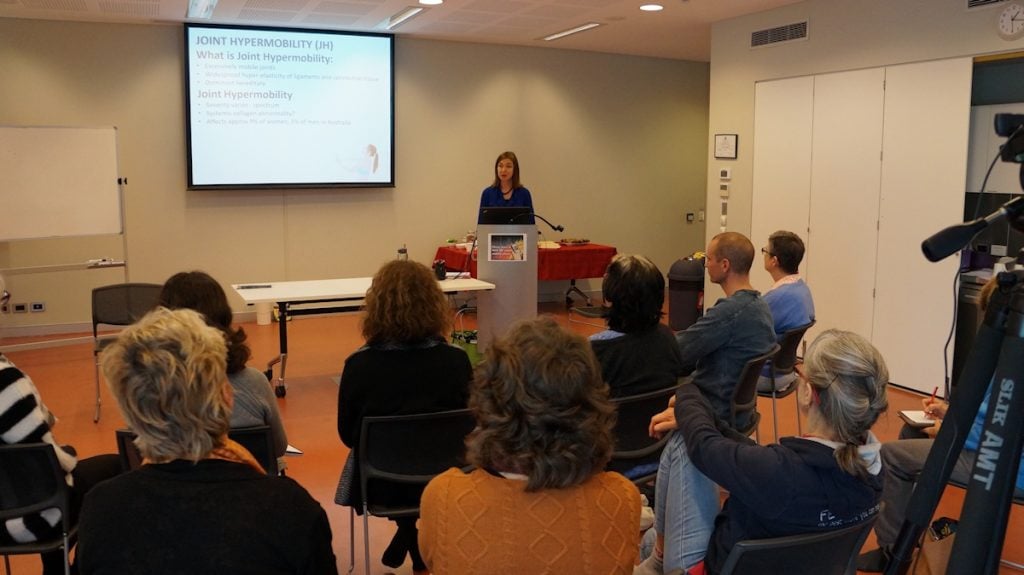
On Tuesday 11th November, Perth Physiotherapist Jodie Krantz from Free2Move in Mt Hawthorn presented a 2 hour workshop to recently graduated Physios at the Australian Physiotherapy Association branch office. Fourteen Perth Physiotherapists, who have graduated within the last 5 years, had the opportunity to experience the Feldenkrais Method first hand from a presenter with over 20 years experience in the field.
Ms Krantz invited participants to engage with questions such as:
- How do we change habits which no longer serve us?
- What about the stubborn, longstanding patterns which seem to defy change?
- Is there a ‘right’ and a ‘wrong’ way to move? or breathe?
- How can the discoveries we make about our own movement patterns enhance our ability to educate our clients?
- What does it mean to re-educate our movement patterns and why is it necessary?
- How can we have more power with less force? greater range with less strain?
The Feldenkrais Method is based on the life work of Dr Moshe Feldenkrais (1904 – 1984). Dr Feldenkrais, an inventor, nuclear physicist and judo expert, understood ‘neuroplasticity’ – the ability of the brain and nervous system to adapt, change and re-wire itself – long before it became a buzzword in popular science. His frequently subtle yet profound and powerful method of movement re-education is useful for anyone seeking to change patterns of pain and tension and replace them with a sense of ease and freedom.
The Feldenkrais Method is popular with Physiotherapists and people seeking to overcome chronic pain or neurological problems as well as athletes, dancers and performing artists, who wish to become more graceful, coordinated, efficient and powerful.
Ms Krantz describes Feldenkrais as a scientific approach to movement re-education, which focuses on improving the human capacity for learning. It involves directing the attention to the body in a relaxed, enjoyable and mindful way, while exploring slow, gentle yet unusual movement sequences. This helps Feldenkrais students become more aware of muscular habits and tension patterns, allowing them to discover new and more efficient patterns of movement. Ultimately Dr Feldenkrais was not just interested in flexible bodies but in flexible minds.
In her work as a Physiotherapist, Ms Krantz finds that the Feldenkrais Method is particularly helpful for people with chronic pain issues such as back pain, headaches, shoulder pain and hip pain.
“Feldenkrais looks at the whole body and how the different body parts work in relation to each other” said Ms Krantz. “Instead of focusing on the pain itself, the focus is on pain-free, comfortable movement. The relaxing and enjoyable movements have a positive effect on physical and mental well being, helping break the vicious cycle of pain, tension and poor posture, which often occurs with chronic pain.”
Ms Krantz has been invited to present another workshop for the Australian Physiotherapy Association on the Feldenkrais Method in 2015 on the topic of Feldenkrais for Chronic Pain. She will also present a Chronic Pain workshop for the Australian Feldenkrais Guild next year.
-

Learning easy graceful movement through Feldenkrais
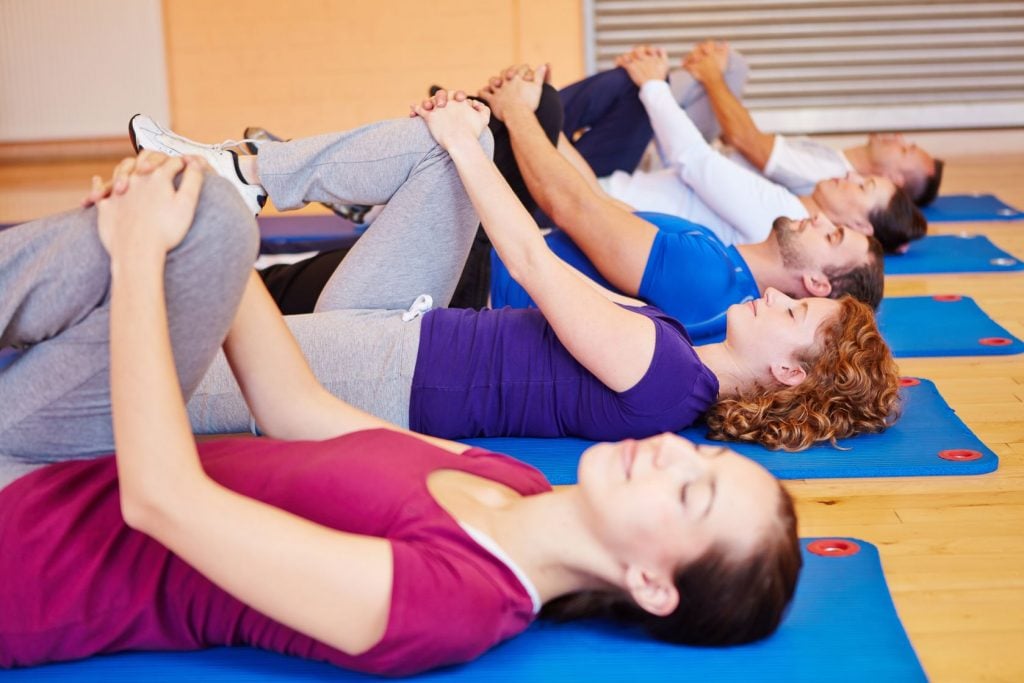
Awareness Through Movement Feldenkrais Lesson Learning easy graceful movement through Feldenkrais
No strain, more gain with Feldenkrais
By Jodie Krantz (Physiotherapist and Feldenkrais Teacher)
The Feldenkrais Method…
The Feldenkrais Method is named after its inventor,Moshe Feldenkrais, Israeli judo master and internationally renowned physicist. By exploring exactly how we move, and then expanding our movement repertoire we not only enhance the quality of our movement, but open up all sorts of new possibilities, some of them delightful and unexpected. Feldenkrais is not primarily about exercise or therapy. It is about learning.
In “Awareness Through Movement” lessons, students are verbally guided through a series of gentle and often relaxing, (but not necessarily easy!) movements, mostly done lying on the floor or sitting in a chair.
Unusual and thought provoking, the lessons stimulate and challenge both the mind and body to find more efficient patterns of coordination that help us in our everyday lives. Students work very gently and slowly and are encouraged to do only what feels safe and comfortable for them. In “Functional Integration” students receive an individual one-toone lesson, while lying or sitting, comfortably clothed, on a low padded table. The practitioner provides the student with very gentle and respectful hands-on movement guidance.You have to walk before
you can run…Moshe Feldenkrais studied the way in which we learn to move as a children. Children appear to move so freely and easily, even though their
coordination may not be fully developed. They also seem to learn very quickly compared with adults. The
Feldenkrais Method takes us on a journey through the ‘basics’ of movement, often mirroring the developmental sequence. We use a ‘trial and error’ method of learning similar to that used by babies. These fundamental movements then become building blocks for more
difficult and complex actions.Kick the habit…
Most of us, particularly as we get older, simplify our movements so that they become less varied. Have you ever noticed that you always tend to dry yourself or brush your teeth in the same sequence? Do you
cross your legs with the same leg on top each time? Do you tend to chew more often on one side of the mouth? Such habits are not usually conscious and they have the benefit that we don’t have to think about how to move every time we want, say, to get dressed or drive the car.
The trouble with habits is that they are not always the most efficient way
of moving. They often result in some parts of the body getting ‘worn out’ and other parts losing strength and flexibility because of disuse. In Feldenkrais we update and improve upon our own particular movement habits learning to move in a wider variety of different ways, so that the
wear and tear is shared more evenly.The impossible becomes possible…
Feldenkrais is about the impossible becoming possible, the possible easy and the easy graceful.
Difficulties such as aches and pains or limitations in our strength, flexibility or coordination can motivate us to find new ways of moving that reduce the strain and restore a sense of wellbeing. For example if you can’t get up off the floor without assistance you may learn a simpler way of doing it. Or maybe you can sit
unsupported by the back of a chair, but what if it were to become so easy it felt almost effortless? Imagine rolling over in bed (easy for most
people) becoming so fluid and graceful that you find yourself sleeping as deeply and peaceful as a baby? In Feldenkrais wedon’t have to try hard to improve. Consciously focusing our awareness on how we do
things and exploring a variety of movements alternatives, begins to reprogramme the subconscious part of our brain, changing our automatic movements and posture.
You’re the boss…
With Feldenkrais lessons, you are considered to be the ultimate authority on your own body. Only you know it from the inside and especially
as your body awareness increases, you can feel whatis right for you and what is harmful. This is an opportunity to take charge of your own wellbeing. Your Feldenkrais teacher is there simply to guide you in a process of learning about yourself, from yourself. -
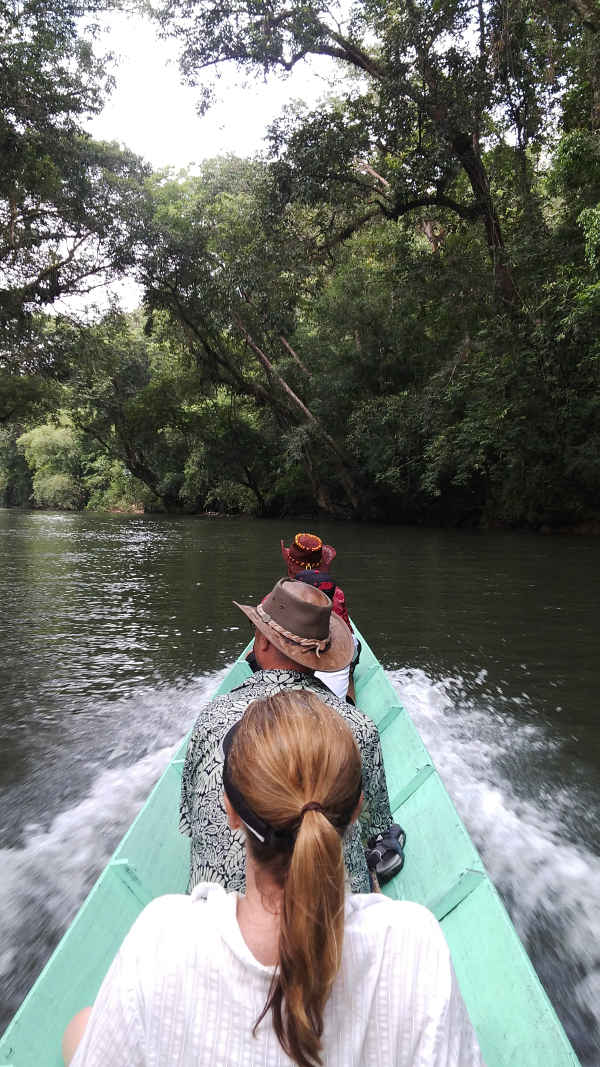
Jodie in Borneo February 2014

Jodie in Borneo February 2014
Feldenkrais in the heart of Borneo
I recently had the privilege of travelling with Malaysian friends into the heart of the Borneo jungle to the land of the headhunters.
Our trip took us to Bintulu in Sarawak, then across to Julau and up the ‘Batang Rajang’ river to small villages only accessible via longboat. Our host, Amal, skillfully guided the motorised long-boat up through shallow rapids, under the beautiful and dense canopy of the jungle.

Amal lives with his wife and her sister. Amal is in his late 60s and has lost quite a few teeth. Both women are about 80 years only. He and his family are from a tribe known as the Iban. Prior to arrival of Catholic missionaries in the area, the Iban were headhunters. They speak their own tribal language, will little Malay or English spoken except by the children, who go to primary school via long-boat.

Today they are hunter-gatherers, farming rice and pepper and living off the land, with a diet of rice, wild pig, monkey, frogs, river snails, palm shoots and fern shoots. Amal looks after the Catholic chapel, right next door to his house. A doctor only comes up the river twice a year. The electricity is only on for a few hours a day when the generator is running.
Amal’s sister in law was only known to us as ‘Ibo’, a friendly Iban term for ‘older woman’, because it is forbidden to speak the name of your parents in-law. I did some Feldenkrais with her to see if I could assist with her problem of ‘kicking in her sleep’. I’m guessing this was restless leg syndrome or a sleep disorder.


Amal’s wife, also known to us only as ‘Ibo’ had neck and shoulder pain from carrying things such as sacks of rice up to 50 kg on her head, neck and shoulders.
I gave her 2 Feldenkrais lessons and left her with my contoured memory foam travel pillow!
Word got around about my work and when we visited the long-house on the other side of the river, 2 women presented themselves to me for Feldenkrais. One could barely walk, due to severe knee pain – she could not afford to have a knee replacement. She had grossly swollen legs, foot pain on both sides and lower back pain.

At first she was extremely nervous and jumpy when I touched her, so I used micro-movements and kept my own hands and whole body as soft as possible, looking to her face for any signs that I might be causing any additional pain.
There was not a lot I could do in one session but I chose to show her a relatively pain-less way to roll over from side to side in bed and a simpler and less painful way to get up from the floor.
My second client at the long-house was a woman, approximately 30 years old, with a swollen ankle. It was difficult to ask questions due to the language barrier. I presumed she had sprained it, especially with the slippery river rocks and treacherous stairs down to the river’s edge, but perhaps it was gout. I gave her a Feldenkrais lesson on finding the optimal alignment of ankle, knee and hip and left her with an exercise of trying to balance on one foot with her eyes closed.
I found out that the local people do not have access to eye testing or spectacles. Common medical problems include vitamin deficiencies, intestinal worms, arthritis and tooth decay. They also need education about the harmful effects of smoking and alcohol.
My plan on returning to Australia is to see if I can get Equal Health to take a team of medical volunteers to the area, including doctors, dentists, nurses and physiotherapists. I went with Equal Health to Trichy in Tamil Nadu, India in 2011 as a volunteer physiotherapist.
-

Golfer’s Elbow

Golfer’s Elbow
Golfer’s Elbow (Medial Epicondylitis) is far less common that Tennis Elbow and affects the muscles which attach to the inner aspect of your elbow. These muscles that move the wrist and fingers and are involved in gripping and lifting. Repetitive over-use of these muscles or incorrect technique when playing racket sports, weight lifting or rock climbing can cause golfer’s elbow.
Physiotherapy Treatment will depend on whether the cause of the pain is tendonitis or tendonosis. At Free2Move in Mt Hawthorn Perth your physiotherapist will be able to assist with diagnosis and provide treatment and exercises to promote recovery.
Clinical Pilates and Feldenkrais are methods which help improve your posture and biomechanics to help prevent recurrence of injury.
Feldenkrais helps you become more aware of how you can use the larger more powerful muscles of your trunk to perform heavy work, while using the smaller muscles around the hands and elbows to do fine and precise movements.
Exercise Rehab may assist by improving your ability to utilise your ‘core’ muscles, the deeper muscle groups which are involved in stability, balance and postural alignment.
This enables you to take charge of your own health and well-being and help prevent future episodes of pain. Please discuss this with your Physiotherapist to work out the most suitable programme for your situation.
-

Arthritis

Arthritis
Arthritis is one of most common causes of chronic pain. Physiotherapy can assist you to maintain your independence by safely improving your flexibility, strength and mobility.
How We Can Help
Don’t let pain stop you from exercising or losing weight! At Free2Move many clients with Osteoarthritis, Rheumatoid Arthritis and Fibromyalgia attend our exercise programmes every week. Our Physiotherapists support them in safely improving their strength, mobility, posture and body awareness without aggravation of pain.
Our Clinical Pilates Studio Programme is the most popular way to begin exercising for people arthritis, because of the benefits of strengthening your core muscles. Our Pilates machines help you build strength safely and gradually, beginning with partial weight bearing exercises (usually done lying down) and progressing to full weight bearing.
 Feldenkrais is the gentlest of the classes we offer at Free2Move and often the best way to begin if you are in a lot of pain. Our clients with various forms of Arthritis have found Feldenkrais extremely helpful for relieving and managing pain. It’s relaxing and enjoyable!
Feldenkrais is the gentlest of the classes we offer at Free2Move and often the best way to begin if you are in a lot of pain. Our clients with various forms of Arthritis have found Feldenkrais extremely helpful for relieving and managing pain. It’s relaxing and enjoyable!Not sure which exercise programme is best for you? Discuss it with one of our friendly and experienced Physiotherapists.
Book an individual assessment now
[/vc_column_text][/vc_column][/vc_row]
-

Joint Hypermobility Syndrome

Joint Hypermobility Syndrome
Have you ever suspected that you are ‘double jointed’?
Do you have a history or frequent sprains and strains, or clicky joints, going back to when you were a child? Then read on, as you may have Joint Hypermobility or Joint Hypermobility Syndrome.
Joint Hypermobility is a condition in which joints can be moved beyond the normal or expected range of movement – in other words you are very flexible. When Joint Hypermobility affects multiple joints in the body, it may be due to a systemic condition causing excessive mobility of the ligaments and connective tissues, which support the joints.
Joint Hypermobility Syndrome (JHS) refers to a group of conditions in which Hypermobility occurs along with chronic pain (pain lasting more than 3 months) in multiple joints. It has been under-recognised and under-treated by the medical establishment.
How We Can Help
Physiotherapists Jodie Krantz and Alison McIntosh at Free2Move have a special interest in working with children and adults with JHS. The process begins with an individual assessment. The first thing that usually needs to be addressed is managing the chronic pain, because when you’re in pain it’s hard to learn anything new. Next you need to begin to learn how to move more smoothly, and safely in a way that does not keep aggravating your pain. This includes looking at your posture for sleeping, sitting and standing, how you walk, how you bend, how you lift and so on.




